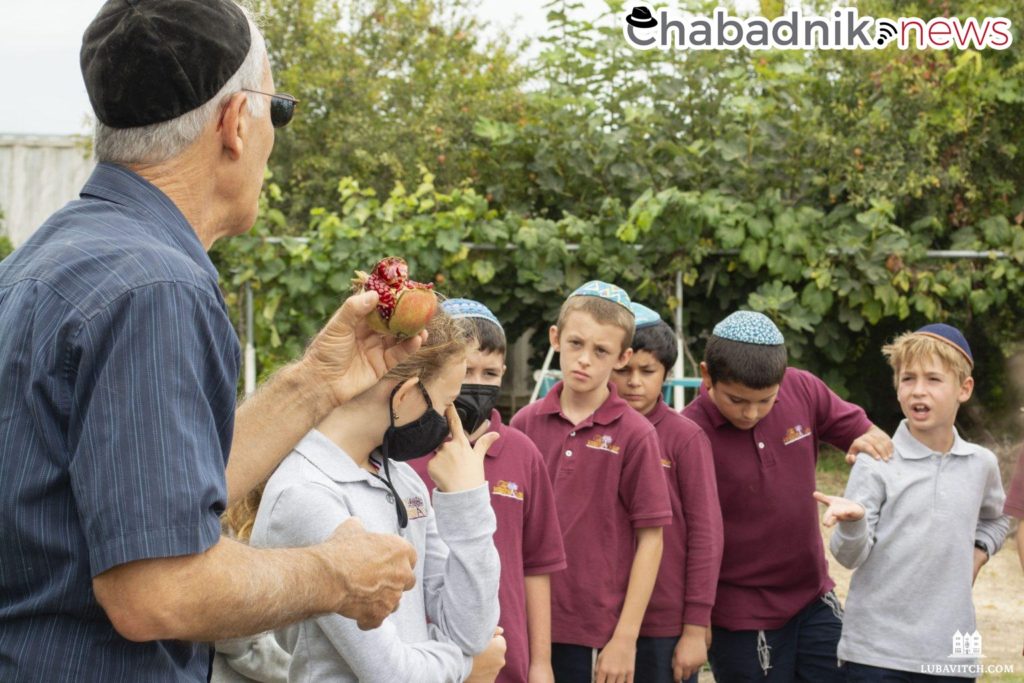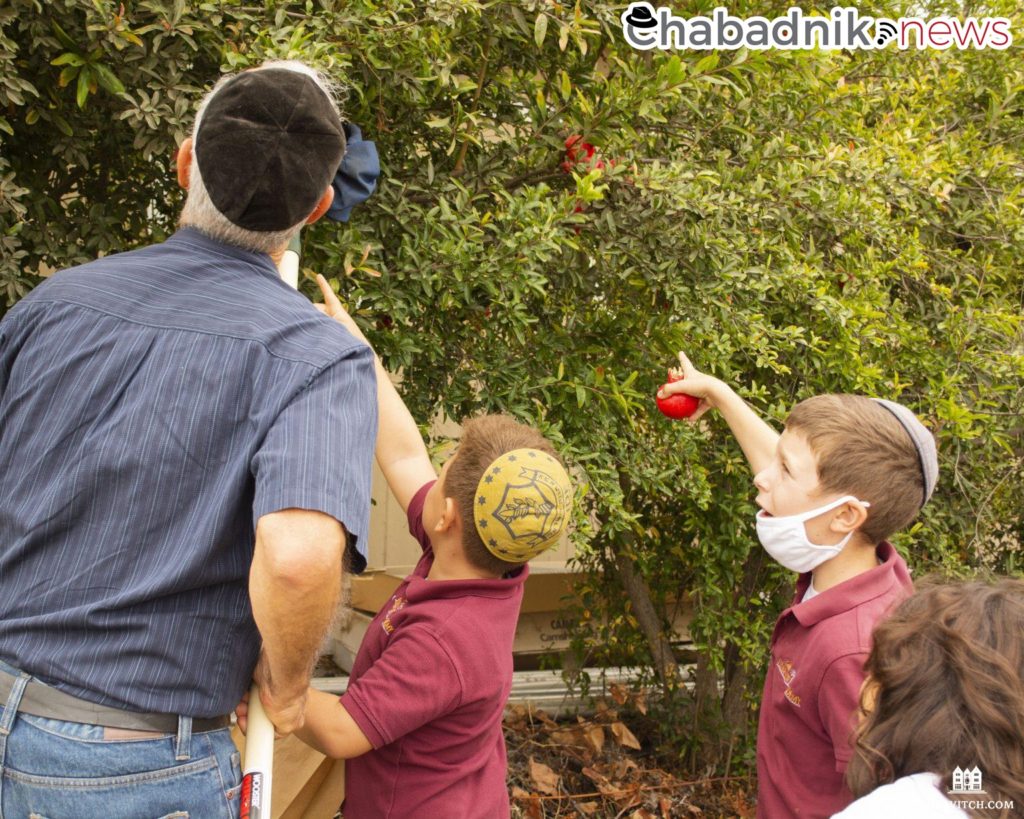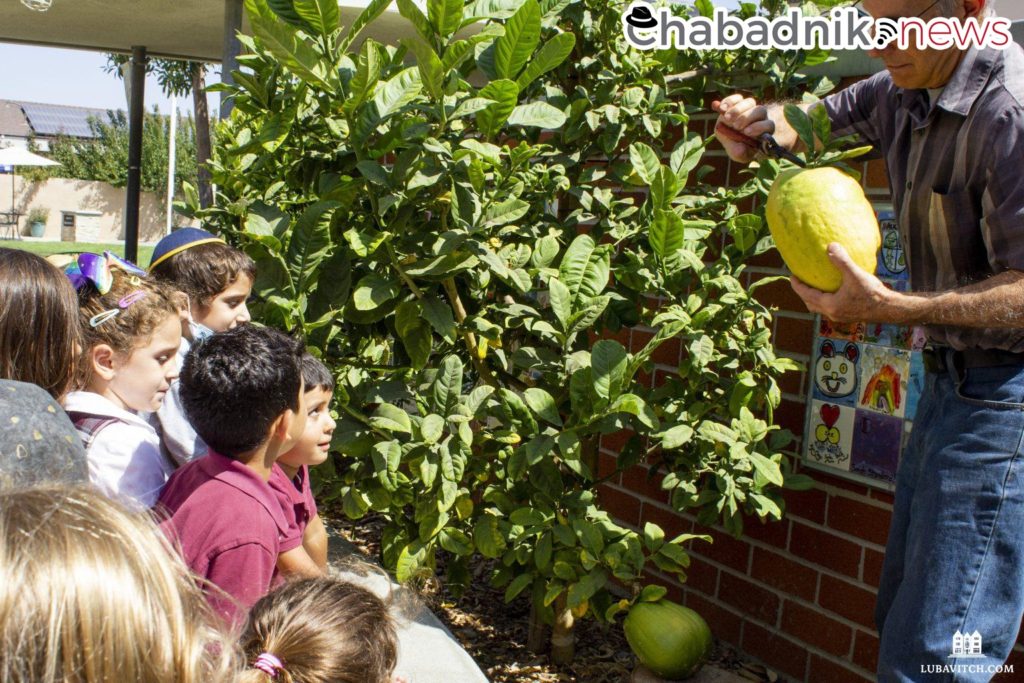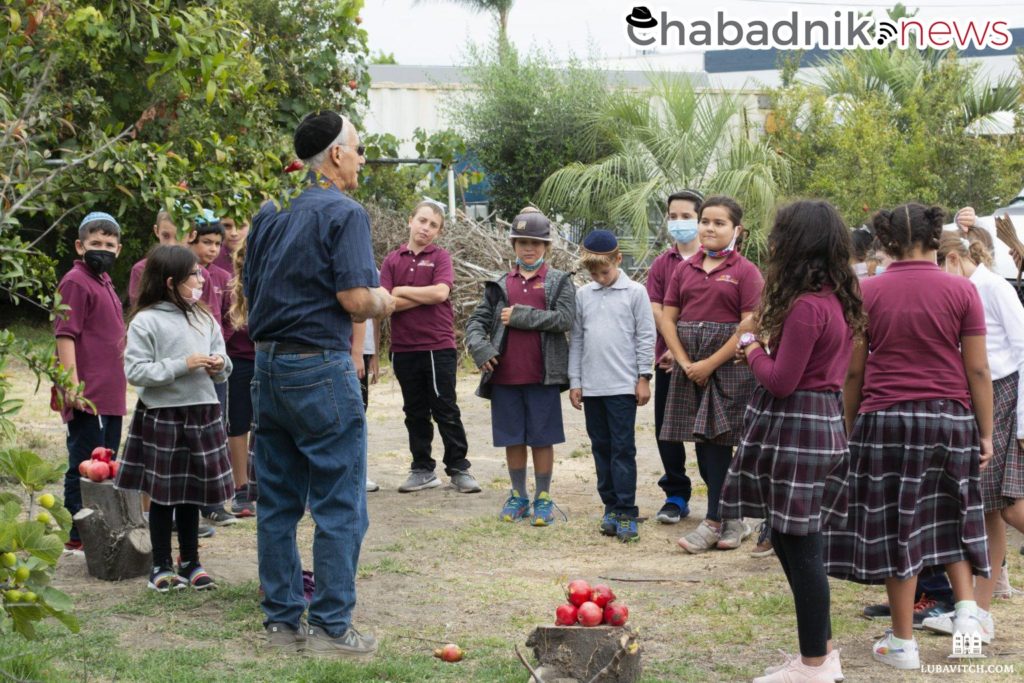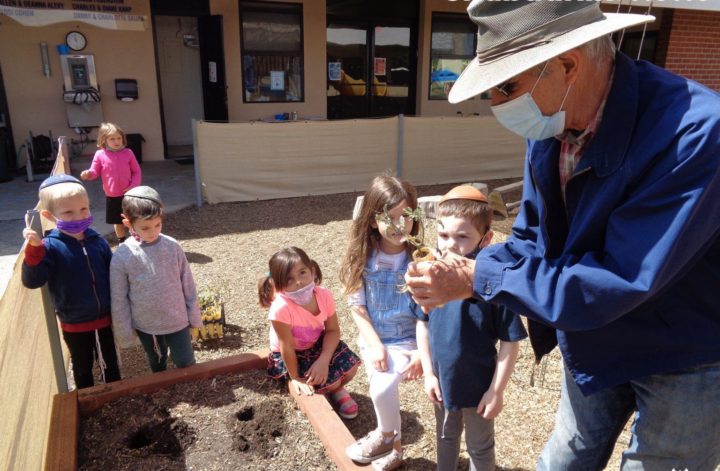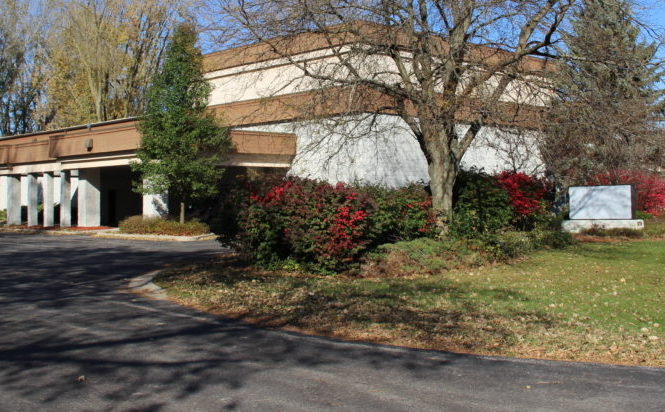
Steve Berger pulls up to the Hebrew Academy’s parking lot every Tuesday. He’s not here to meet with the school’s 300 students. The seventy-year-old’s weekly visits are for checking on his own brood, some thirty-five fruit trees blooming across the Long Beach campus.
Berger, a computer programmer by training and a horticulturist by hobby, has taught himself everything there is to know about trees and flora. For the last seventeen years, he’s been planting love for the children of southern California.
It all started with Israel’s special fruits and a passionate educator, Rabbi Avrohom Popack. “When he asked me to plant the seven species on campus, I had no idea what they were,” the dedicated volunteer recalls. He learned quickly. Soon enough, fig, date palm, and olive trees were swaying in the sunshine. Grape vines and tracts of wheat and barley popped up quickly as well. Berger’s pomegranate trees are so verdant that every student picks his own glossy red fruit to bring home each Rosh Hashanah.
That was just the beginning. Several times a year, he helps preschool students plant sugar snap peas and onion seedlings in their Kinder Garden. Mango, apple, avocado, plum, and tangerine trees surround the school’s buildings, providing beauty along with shade and snacks. They also yield something less tangible but more important, Popack believes. “Steve invests his whole heart into each child and into each plant. He teaches them about the miracles and science of the natural world. He shows them the greatness of G-d, how one small seed turns into a lush tree. It’s magical for the kids, their eyes sparkle when they pick their fruit.”
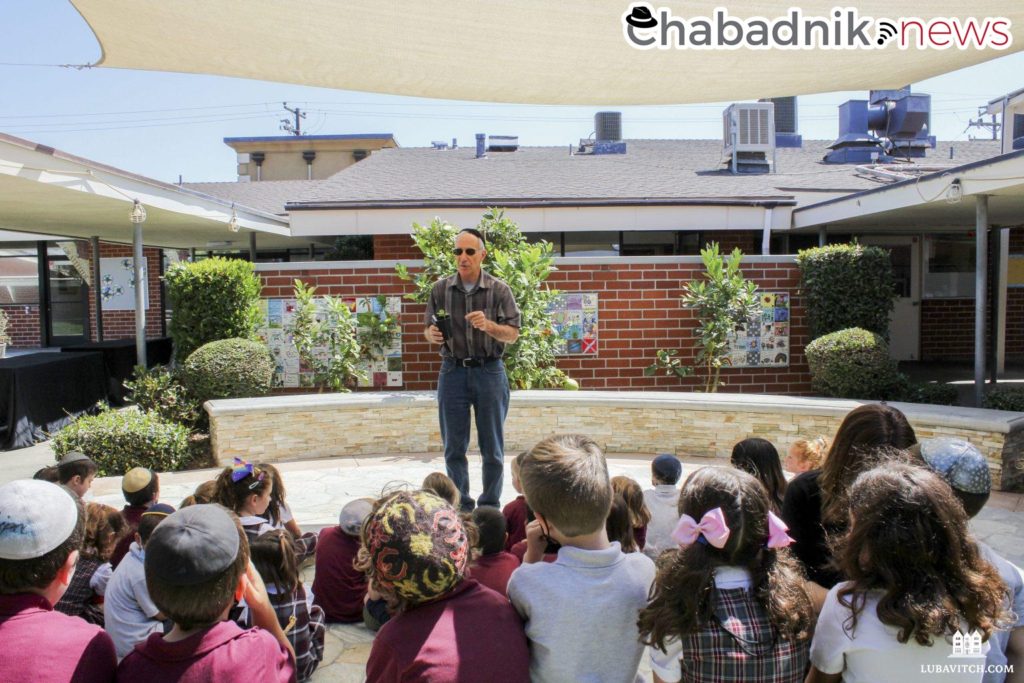
Berger’s greatest horticultural triumph is a trio of etrog trees that flank the teachers’ lounge. “About eight years ago, I asked the rabbi if we should plant an etrog tree. He loved the idea so I started to search the internet. You can find everything online, but there were no etrog trees.” After several frustrating months, he gave up on purchasing a tree and did the next best thing. Berger extracted seventy-eight seeds from his rabbi’s used etrog, planting each in its own little pot. More than half germinated, eventually topping out at two inches each. One of them was just a bit taller. Every plant died over the next few weeks except for that one determined seedling that kept growing. When Tu B’shvat rolled around, it was just big enough to plant in the ground. The following year, Berger did the same thing and succeeded in planting two more saplings. This past Sukkot, each class in the school picked its own etrog to use on Sukkot. Some of them were as big as a football.
“I am no rabbi and I’m just a hobbyist, but together we learned a lot about the technicalities and Jewish laws of growing etrogs,” Berger explains. Before giving each class their own citron, Berger shared the trees’ backstory with the children. “They are miraculous trees,” enthuses Popack. “Etrog trees are supposed to take six to seven years to produce fruit. Our etrogs appeared in half that time.”
Giving to the community is an important facet of Berger’s commitment to the school’s plant life. And it’s most evident each year on Tu B’shvat when children and their grandparents plant a tree on campus as part of Hebrew Academy’s Generations Day. All of the participants also receive a cutting of a pomegranate or fig tree to plant in their own yards. Hundreds of trees growing across California and in other states are a testament to one man’s vision.
Berger continues to plant seeds in more ways than one. “When grandparents spend a day at school, they witness the next generation learning and growing in front of their eyes. And when they see how one man does so much for them,” continues Popack, “it inspires them to volunteer and invest in that future as well.”
